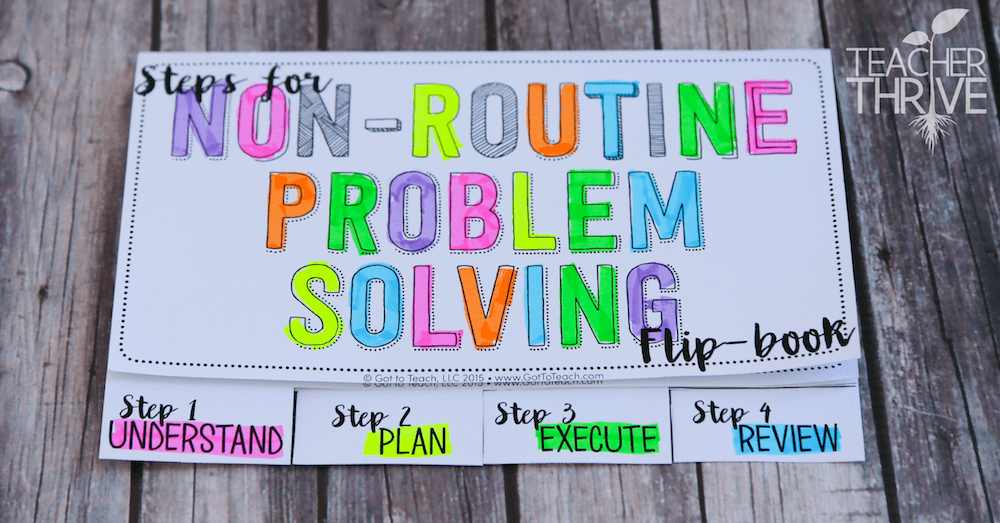What is non-routine problem-solving in math?
A non-routine problem is any complex problem that requires some degree of creativity or originality to solve. Non-routine problems typically do not have an immediately apparent strategy for solving them. Often times, these problems can be solved in multiple ways.
Incorporating non-routine problem solving into your math program is one of the most impactful steps you can take as an educator. By consistently allowing your students to grapple with these challenging problems, you are helping them acquire essential problem-solving skills and the confidence needed to successfully execute them.
One of the best ways to prepare students for solving non-routine problems is by familiarizing them with the four steps of problem-solving. I have a set of questions and/or guides for each step, that students can use to engage in an inner-dialogue as they progress through the steps. You can download this free Steps to Non-Routine Problem Solving Flip-Book {HERE}.
1. Understand:
This is a time to just think! Allow yourself some time to get to know the problem. Read and reread. No pencil or paper necessary for this step. Remember, you cannot solve a problem until you know what the problem is!
- Does the problem give me enough information (or too much information)?
- What question is being asked of me?
- What do I know and what do I need to find out?
- What should my solution look like?
- What type of mathematics might be required?
- Can I restate the problem in my own words?
- Are there any terms or words that I am unfamiliar with?
2. Plan:
Now it’s time to decide on a plan of action! Choose a reasonable problem-solving strategy. Several are listed below. You may only need to use one strategy or a combination of strategies.
- draw a picture or diagram
- make an organized list
- make a table
- solve a simpler related problem
- find a pattern
- guess and check
- act out a problem
- work backward
- write an equation
- use manipulatives
- break it into parts
- use logical reasoning
3. Execute:
Alright! You understand the problem. You have a plan to solve the problem. Now it’s time to dig in and get to work! As you work, you may need to revise your plan. That’s okay! Your plan is not set in stone and can change anytime you see fit.
- Am I checking each step of my plan as I work?
- Am I keeping an accurate record of my work?
- Am I keeping my work organized so that I could explain my thinking to others?
- Am I going in the right direction? Is my plan working?
- Do I need to go back to Step 2 and find a new plan?
- Do I think I have the correct solution? If so, it’s time to move on to the next step!
4. Review:
You’ve come so far, but you’re not finished just yet! A mathematician must always go back and check his/her work. Reviewing your work is just as important as the first 3 steps! Before asking yourself the questions below, reread the problem and review all your work.
- Is my answer reasonable?
- Can I use estimation to check if my answer is reasonable?
- Is there another way to solve this problem?
- Can this problem be extended? Can I make a change to this problem to create a new one?
- I didn’t get the correct answer. What went wrong? Where did I make a mistake?
My Brain Power Math resources are the perfect compliment to this free flip-book. Each book has a collection of non-routine math problems in a variety of formats.















